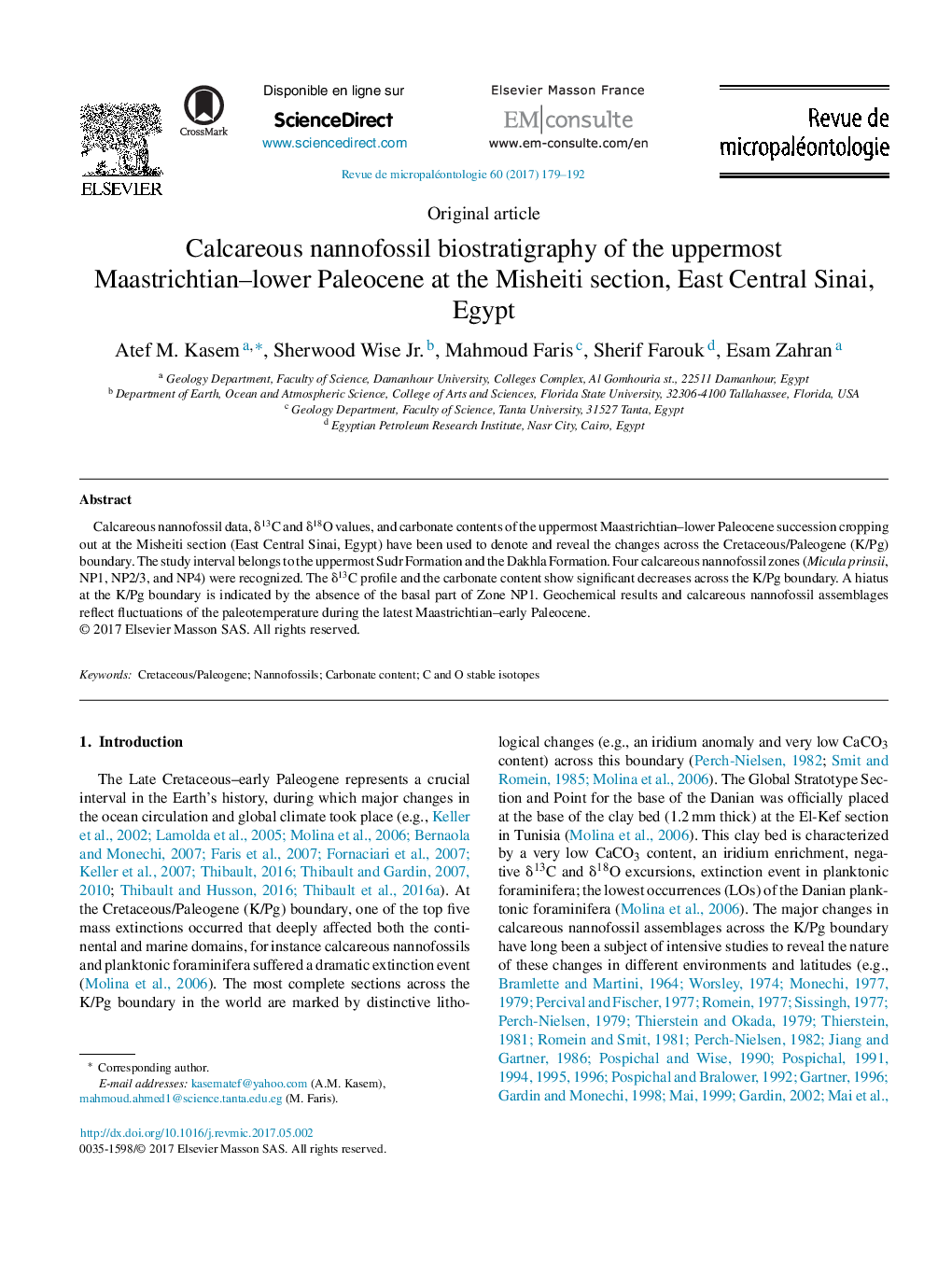| Article ID | Journal | Published Year | Pages | File Type |
|---|---|---|---|---|
| 8916682 | Revue de Micropaléontologie | 2017 | 14 Pages |
Abstract
Calcareous nannofossil data, δ13C and δ18O values, and carbonate contents of the uppermost Maastrichtian-lower Paleocene succession cropping out at the Misheiti section (East Central Sinai, Egypt) have been used to denote and reveal the changes across the Cretaceous/Paleogene (K/Pg) boundary. The study interval belongs to the uppermost Sudr Formation and the Dakhla Formation. Four calcareous nannofossil zones (Micula prinsii, NP1, NP2/3, and NP4) were recognized. The δ13C profile and the carbonate content show significant decreases across the K/Pg boundary. A hiatus at the K/Pg boundary is indicated by the absence of the basal part of Zone NP1. Geochemical results and calcareous nannofossil assemblages reflect fluctuations of the paleotemperature during the latest Maastrichtian-early Paleocene.
Keywords
Related Topics
Physical Sciences and Engineering
Earth and Planetary Sciences
Palaeontology
Authors
Atef M. Kasem, Sherwood Jr., Mahmoud Faris, Sherif Farouk, Esam Zahran,
